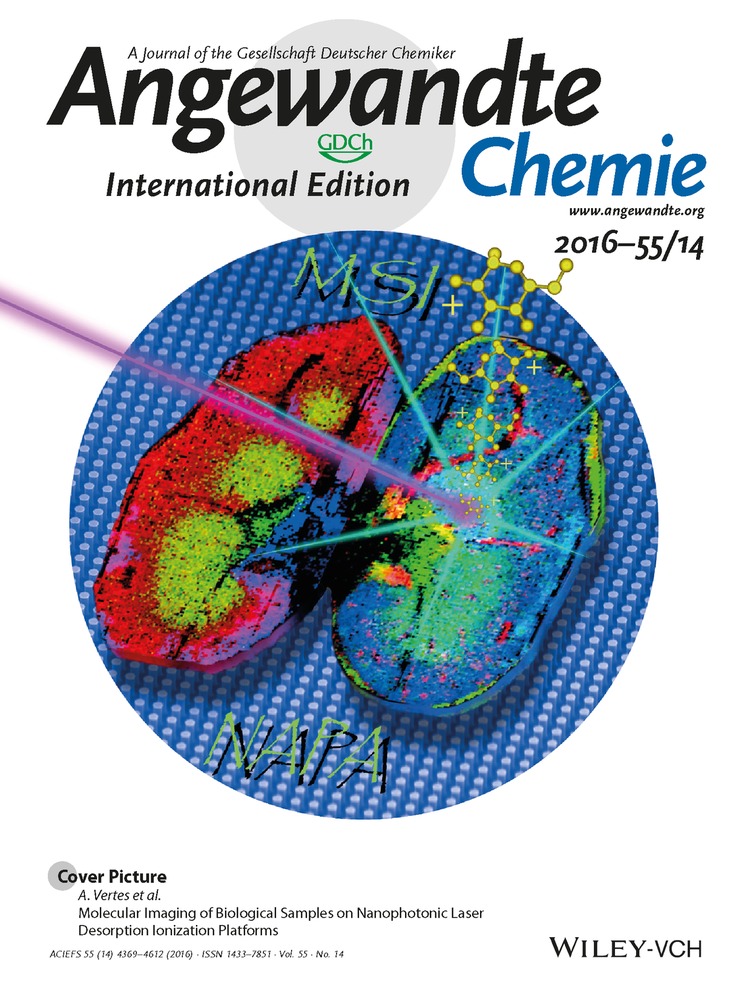Biocatalysis: Successfully Crossing Boundaries
Graphical Abstract
“ … The creation of robust biocatalysts with desired properties was previously challenging. Nowadays, knowledge of bioinformatics, protein engineering, molecular biology, high-throughput screening, as well as experience in biocatalysis and organic synthesis, are key skills to identify, develop, and implement novel synthetic routes …” Read more in the Editorial by Uwe T. Bornscheuer.
Enzymes have been used for a long time in food production, and are also commonly used as additives for detergents, and in the field of chemistry for the synthesis of chiral pharmaceutical intermediates, flavors, fragrances, and polymers. Until the late 1980s, when gene technology evolved to become a standard tool, biocatalysis had to rely on the isolation of enzymes from natural resources (microbes, animal tissue, and plants). The properties of the enzymes could not really be altered, and at that time, only immobilization could be used to possibly enhance their stability and to enable recycling. The ability to identify and clone genes to subsequently express the enzyme of interest recombinantly in a host organism not only allowed the production of enzymes of reliable quality on a larger scale, but most importantly granted the opportunity to perform protein engineering by rational design or by directed evolution “in the test tube”. Despite these achievements, the creation of robust biocatalysts with desired properties was still challenging, time-consuming, and labor-intensive because of the lack of understanding about how to best perform rational design or by the requirement to interrogate enormous mutant libraries. The situation has changed substantially in recent years.

Sequence Databases Foster the Discovery of Novel Enzymes
Thanks to cheap and fast pyrosequencing, we have seen a huge “explosion” in the number of protein sequences identified (currently approximately 52 million entries) and deposited in public databases such as the National Center for Biotechnology Information (http://www.ncbi.nlm.nih.gov). For instance, the identification of 8 complete and 789 draft genomes from a single aquifer water sample was recently reported in Nature. This readily available information enables the easy identification of novel enzymes by computer, and hence scientists can quickly widen the spectra of potentially useful biocatalysts.
Computational Tools Facilitate Enzyme Design
Advanced bioinformatic tools not only allow an easy analysis of protein sequences within large enzyme superfamilies, but in combination with the also steadily growing number of solved 3D structures (currently around 110 000), rational protein design facilitates the design of smart mutant libraries while increasing the chance of identifying desired variants. Hence, important aspects for biocatalytic applications in industrial processes such as substrate scope, stereoselectivity, or type of the catalyzed chemical reaction can be addressed more easily and, most importantly, much faster. In parallel, computational tools became significantly more accurate and easier to use in the past few years. Nowadays, these programs even allow the design of completely novel enzymes from “scratch”, thus broadening the scope of reactions to be catalyzed by proteins, as well as teaching us important basic aspects of enzyme biochemistry, such as mechanistic details and insights into rules for protein folding.
Combining Chemo- and Biocatalysis
Homogeneous transition-metal catalysis and organocatalysis developed rather independently from biocatalysis over decades. Among a few exceptions were the application of Pd-, Ru-, or Rh-based racemization catalysts to achieve dynamic kinetic resolution in the synthesis of chiral alcohols or amines by using lipases. More recently, researchers could successfully combine man-made catalysts with enzymes in multistep one-pot reactions. A major challenge that is still not easy to solve involves the incompatibility of the reaction conditions and the interference of reagents required to have a chemical and an enzymatic step in the same pot, with both steps proceeding quickly to selectively furnish the product in high yields. Current solutions are the application of compartmentalized reactions or the development of flow chemistry, in which chemo- and enzymatic reactions take place one after the other. Whether these solutions can compete with respect to productivity in the field of biocatalysis where classical synthesis that uses standard batch equipment is employed still needs to be elucidated.
Multistep Biocatalysis or Metabolic Engineering?
A further important trend is the combination of several enzymes that work “hand-in-hand”. In this way, cascade reactions take place in which complex products, which do not occur in common metabolism, can be made from simple starting materials by taking advantage of the excellent chemo-, regio-, and stereoselectivity of enzymes. In principle, this can be performed by having a set of desired enzymes mixed together: several isolated enzymes, crude cell extracts from a microbial host in which they were produced, or resting cells. Alternatively, a suitable host organism may be subjected to metabolic engineering to ensure that all desired reactions take place by channeling the metabolism toward the synthesis of the desired new product in living (microbial) cells, preferentially starting from readily available and cheap carbon sources. In both concepts, the challenge is that the enzymes to be used are compatible with respect to preferred pH and temperature profiles, but also specific activities and stability must be balanced and inhibition must be avoided. The choice of either multistep biocatalysis or metabolic engineering depends on various further criteria, such as cofactor requirements, tolerance of a microorganism to any intermediate or the final product—especially at high concentrations—the overall process design, and downstream processing considerations. This area of research has developed tremendously and numerous examples can be found in recent literature. For instance, multistep biocatalysis has been reported for the synthesis of precursors for the polymer industry, such as ɛ-caprolactone or ω-amino carboxylic acids, as well as for pharmaceutical intermediates, such as ephedrine and its derivatives. Metabolic engineering enabled not only the production of 1,3-propanediol, which was already established on industrial scale about a decade ago, but also for 1,4-butanediol in the yeast Yarrowia lipolytica or the antimalaria drug Artemisinin produced in engineered Saccharomyces cerevisiae, to name just two recent examples.
New Emerging Chemistry
In the 1980s and 1990s, the most commonly used enzymes in biocatalysis included lipases, ketoreductases, proteases, aldolases, and hydroxynitrile lyases. One major limitation was the lack of availability of other enzymes, even if they were proven to be synthetically very useful. Since they can now be produced recombinantly, and protein engineering can be applied, researchers are able to develop new and even naturally unknown reactions useful for organic synthesis. One recent example is the creation of a P450 monooxygenase derived enzyme able to make cyclopropyl derivatives or aziridines from styrene instead of the normal epoxide. A very interesting field is the development of artificial metalloenzymes by incorporating transition-metal catalysts into protein scaffolds. Although activity and selectivity are usually very low at the start, protein engineering tools again enabled to develop variants with acceptable turnover numbers. Another example is the engineering of an α-amino acid dehydrogenase into an amine dehydrogenase, which is a versatile enzyme for the synthesis of chiral amines. Furthermore, once a new enzyme activity has been discovered, searching protein sequence databases quickly identifies related putative enzymes, which can easily be produced by ordering cheap synthetic genes and expressing them in a host such as E. coli in order to study their properties. A recent example is the boom using imine reductases (IREDs), which are synthetically very useful as they allow the synthesis of chiral (R)- or (S)-secondary and tertiary amines. The first reports about the discovery of IREDs by classical screening of microbial strains were published only a few years ago, but researchers from academia and industry used sequence databases to quickly identify a large number of novel IREDs, which had a much broader substrate scope than the original enzymes.
All these major achievements in the area of biocatalysis have a strong impact on the scientists involved. The technologies used and skills required today differ substantially compared to how biocatalysis was performed classically, when immobilized enzymes from commercial suppliers were, simply speaking, put into a flask and stirred until the reaction was completed. Nowadays, knowledge of bioinformatics, protein engineering, molecular biology, high-throughput screening, as well as experience in biocatalysis and organic synthesis, are key skills to identify, develop, and implement novel synthetic routes. Thus, successful modern biocatalysis research requires joint efforts of a large interdisciplinary team or intensive collaboration within research networks. What is still missing is a better interaction and communication between scientists active in biocatalysis and in chemical catalysis to further boost the development of reactions involving both worlds of catalysis.





